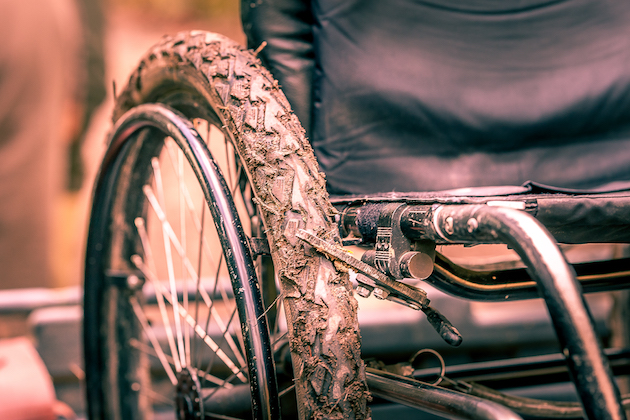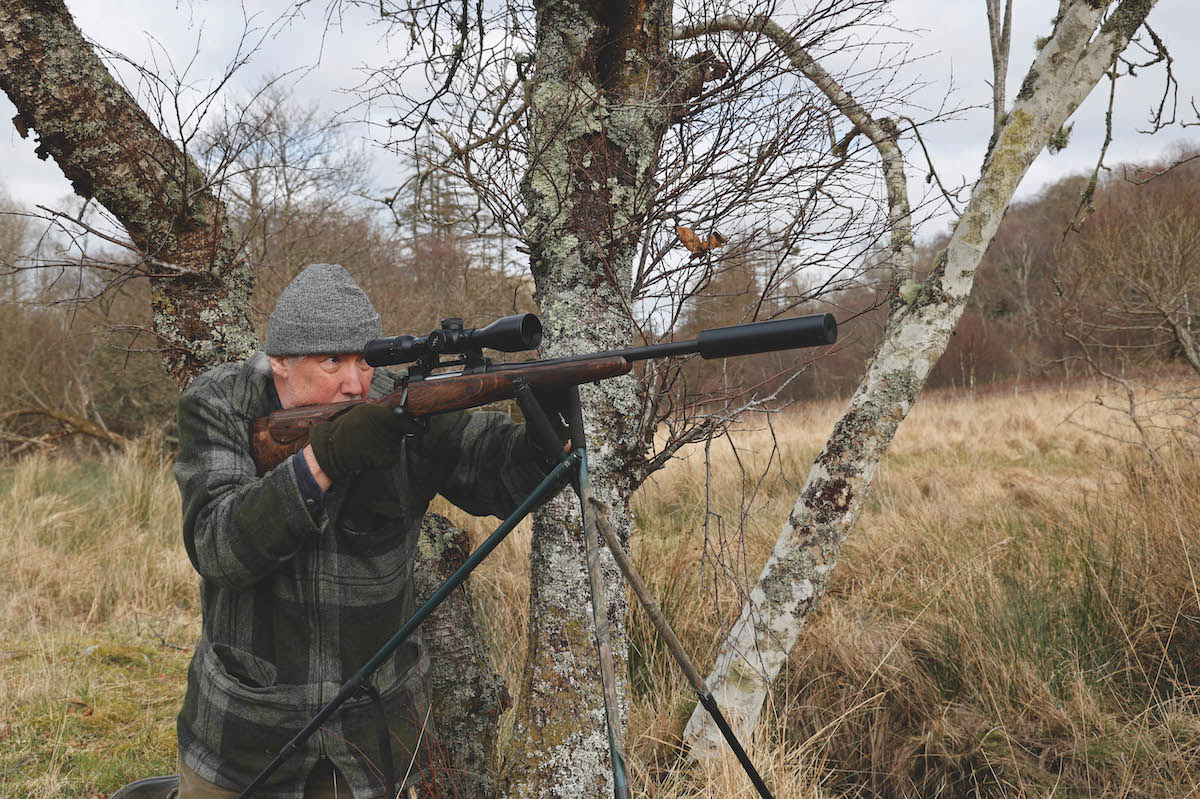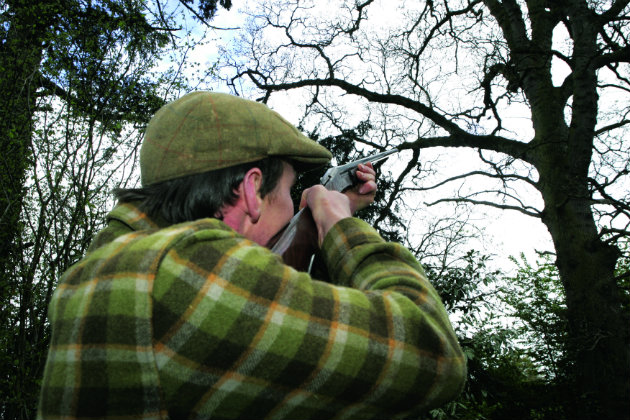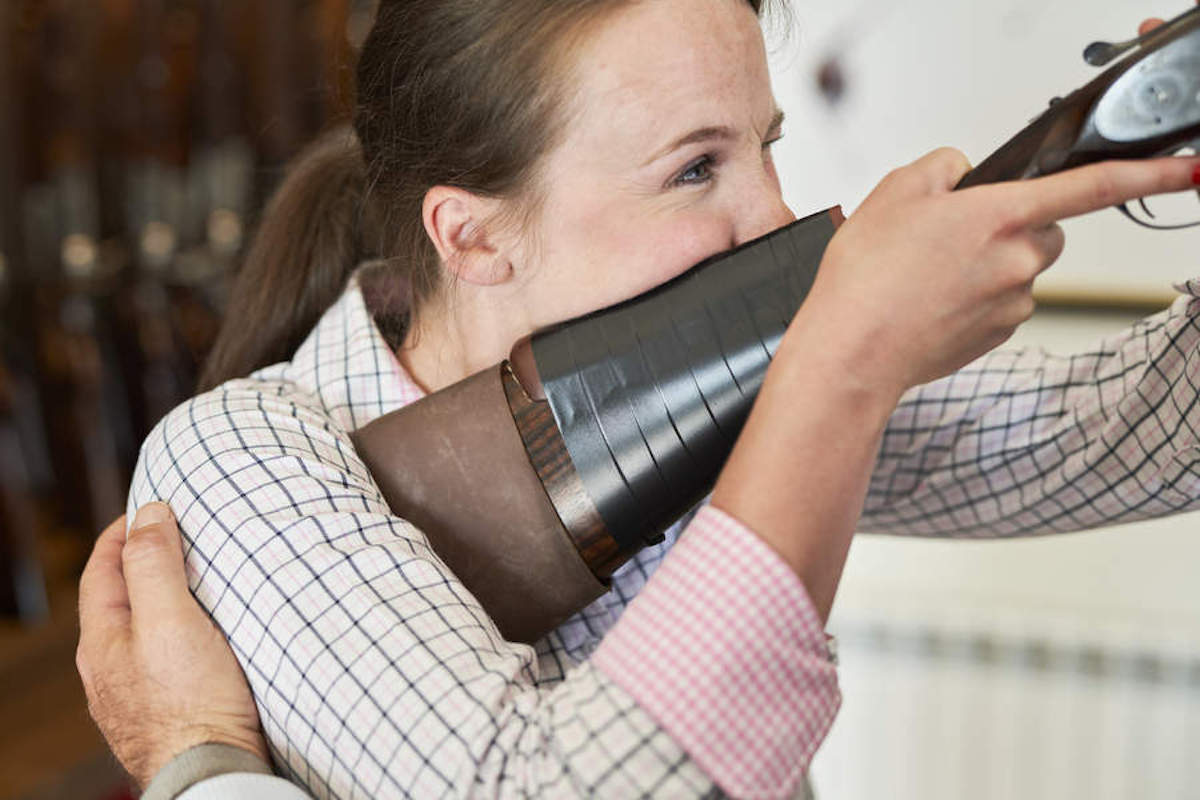A keen Gun discusses the practicalities of shooting with mobility issues
Guns with mobility issues should never feel as though the shooting field is off limits. Martin Puddifer talks to one man who is determined to encourage people in his position to get out and enjoy the sport they love.

Jean-Paul Gaudin, age 46, spent a great deal of his childhood in France and, as he puts it, was “always surrounded by game shooting” thanks to a French grandfather who enjoyed everything from pheasant to wild boar. He shot clays and game sporadically as a teenager, but motorbikes overtook shooting for a number of years as he became more involved in the family’s automotive business.
A serious road traffic accident on the A14 near Cambridge changed the course of Jean-Paul’s life in 1998. He was rushed to Hinchingbrooke Hospital near Huntingdon, with a mid-level spinal compression break to his 11th thoracic vertebra and, as he says, “several other life-changing breaks and injuries”. His rehabilitation took almost three years.
Shooting with mobility issues
Shooting came back into Jean-Paul’s life again after encouragement from his French relatives, and he enjoyed it to the extent that it became a regular activity whenever he was over from England. Jean-Paul’s now wife also encouraged him to shoot clays more often when back in the UK – she had an ulterior motive as she wanted to give it a go too – and it was after her lessons with Geoff Bryant at Northampton Shooting Ground that the question was raised about shooting game again. Jean-Paul says he had reservations about shooting in the UK owing to him now having to use a wheelchair to get around, but his wife reminded him, “just let the talking be done by the way you shoot, don’t worry you’re in a chair”. He was soon enjoying days in North Yorkshire and Lincolnshire and has “never looked back since”, now enjoying 20 to 30 days a season right across the country.
https://www.instagram.com/p/B_dMp6vBHDQ/?utm_source=ig_web_copy_link
Jean- Paul has an Instagram feed under the name The Seated Gun. Created in collaboration with Devon-based photographer Jeremy Pascoe, The Seated Gun seeks to showcase everything that Guns, especially those shooting with mobility issues, could want to know about how to prepare for a day in the field and which estates are best able to cater for their access needs.

Jean-Paul Gaudin enjoying a day’s shooting
How do you plan your trips to shoots you haven’t visited before?
“The key is speaking to the shoot captain and explaining your requirements. In the first conversation I will let them know about my mobility issues and ask if they can ferry me to each peg. It’s important to ask questions about what you will and won’t be able to do on a shoot day. Each mobility issue is different. My injury is deemed a compression injury, not a spinal severance, so I have certain movements/sensations in my lower limbs; I’m a big guy anyway and still attend the gym most days, so I am very fit. For me, having to push some way through a ploughed field isn’t an issue, but it could be for someone else who perhaps might not even be able to get in and out of a mule-type vehicle.”

Guns with mobility issues now have a variety of transportation and seating aids at their disposal.
How do you approach choosing your kit for a day’s shooting?
“My tweeds have been tailored to fit me while allowing movement. I tend to use either a loaders’ bag or a cartridge magazine bag. Once on the peg, I put the cartridges I need into my gun vest pocket, using the bags to top me up if needed. Using a bag means I can carry more cartridges than I’ll ever need and still have space for everything else.”
How are your needs catered for by the shoots you visit?
“It varies from shoot to shoot; however, if I’m in Yorkshire or somewhere in Wales, I take my own loader with me to stuff or load during double-gun days. On other shoots, sometimes the person who drives me to my peg has been “assigned” to me for the day, so they ask if they can stuff for me.”
https://www.instagram.com/p/B-rwfqGl4Zi/
How do you travel around a shoot?
“I tend to be driven in a mule directly to the peg, though I have shot a couple of places where – if the timing is right; for example, when the fields are not seeded – I have driven myself to my peg and shot with my 4×4 behind me.”
What are the most common difficulties you find you might get into?
“It usually comes down to access. I shot down in Devon a few seasons ago on an estate that had a new lodge – it was stunning, but it had no disabled access either at the entrance or near the lavatories.”
Are you more often than not in the line with the other Guns on every drive or will shoots, mindful of your needs, have something set up?
“On most drives I am in the line; on occasions when my peg number is, say, in the middle of a brook or down a bank, the shoot captain normally changes my position with another Gun so I can get to the peg a bit easier.”
How would you describe your “ready” position on the peg and also your shooting technique?
“I sit a certain way, due to the metalwork in my back, which allows me to twist and give me a full 180° reach area.
“I prefer to shoot quarry farther away than when it is directly above me. I find by taking a bird farther away, I have a much bigger degree of pulling through if the first shot doesn’t connect. But I think that is more preference than need. The only difficulty in shooting from a seated position is not being able to pivot on your feet to connect a shot with a bird that’s got past you. If you are sitting in the right position and are good enough, hopefully you don’t need to pivot to make contact.”
Which shoots stand out as being most sympathetic to the needs of those shooting with mobility issues?
“Bettws Hall is fantastic and the same goes for Ripley Castle and the Mountgarret shoots run by Frank Boddy. The way Frank runs the shoot makes a big difference. He is there to serve you for the day; whatever you need or want he will get for you. At Ripley Castle he’s happy to provide a valet who will do everything for you, from driving you around to stuffing on your peg. Between every drive the drinks are laid out on the bonnet of the host’s Defender, and if you don’t want to get out of your vehicle he’ll tell the valet to get you as close as possible so you are part of the day and don’t feel like you’re out on your own.
“The shoot lodge at Ripley Castle is in the shoot yard and Guns have to climb down a number of steps to get in. Frank will always make sure the rest of the Guns go in first and then ask four beaters to lift you down the stairs, so there’s no looking for volunteers and no embarrassment for the person with mobility issues; it’s all very delicately done. Frank has now also put a concrete ramp in the yard if you need to get to the lavatories, and the same considerations have been made up at Mountgarret too.”
Have you ever come away from a shoot feeling let down with how your needs have been dealt with?
“I think every Gun has felt that to some degree, regardless of having mobility issues or not. The key for any shoot that may have a mobility affected Gun visiting is to make it clear to that Gun what they can and cannot offer them, either in the field or facilities elsewhere.”
Getting around a clay ground in a wheelchair
Disabled sport’s profile has risen hugely in recent years, partly driven by the success of British athletes in the Paralympics.…
In general, are shoots more sympathetic to Guns with mobility issues nowadays than compared with when you first started shooting?
“Mobility issues have become so much more apparent now, especially with the recent military conflicts and so on, highlighting the volumes of people affected in one way or another. Everything in general is more sympathetic to the mobility issues people may have. However, there is still a long way to go and I do honestly believe shoots that get their facilities right will experience an increase in Guns with mobility issues wanting to shoot there.”
What is your advice to shoots that need to prepare to host shoot parties where one or more Guns might have mobility issues?
“It’s all about how the shoots can return confidence back to people with mobility issues and make them feel more empowered to carry on ‘as normal’ and go along to a day as a single Gun without feeling any trepidation or that sense of ‘should I be going?’
“You don’t want to be singled out. Game shooting can be a cliquey sport, even more so when the day you’re attending is a syndicate day that has sold some extra pegs. I’ve been to shoots where, as a single Gun with mobility issues, there is that worry of how you’re going to be accepted and whether the other Guns are thinking you are going to hinder their day.
“Sometimes other Guns will look at you and you can tell they are asking themselves why you are there. Some Guns can also be unintentionally patronising – but it’s strange when, once you’ve downed a few birds and they see you can shoot, the barriers come down and the banter starts. Especially as they want to know more about how you’re shooting and the fact it’s great to see a Gun with mobility issues out and thoroughly enjoying the day.
“A lot of the time, people with mobility issues have had their confidence knocked due to their change in circumstance. However, your mobility issue doesn’t need to stop you enjoying your sport. There’s a way round it. It doesn’t have to be a perfect way round it, it just has to be there.”
How did The Seated Gun come about?
“For several seasons now I have been asked by shoots about what it’s like to shoot in a chair, how I do it and is there anything shoots can do to make a day more enjoyable? I am also asked about shoots I would recommend for people with and without mobility issues, so The Seated Gun started from there.
“I met photographer Jeremy Pascoe on the Fulford Estate and following several conversations, and utilising Jeremy’s photographs of me in action, I will be launching a media presence across YouTube and Instagram. Jeremy will be accompanying me on several estates during the coming season.
“The overall concept behind The Seated Gun is to provide a genuine, real and first-hand experience through a social media presence of videos and posts for Guns with and without mobility issues. To experience estates, focusing on the overall experience and how they cater for those shooting with mobility issues, from shoot lodge facilities to provision of transport and loaders. I will also be offering a service where I visit and review a shoot and its facilities, providing feedback on what could be done to enable Guns with mobility issues to shoot there.”









